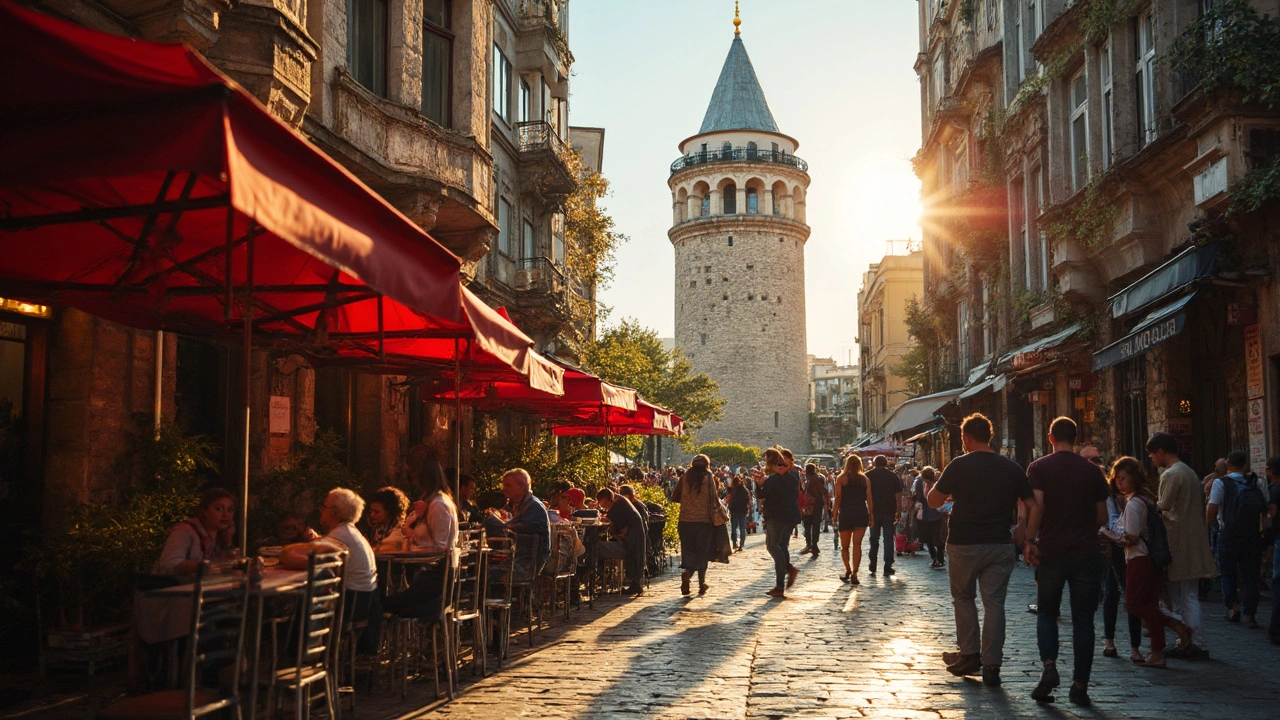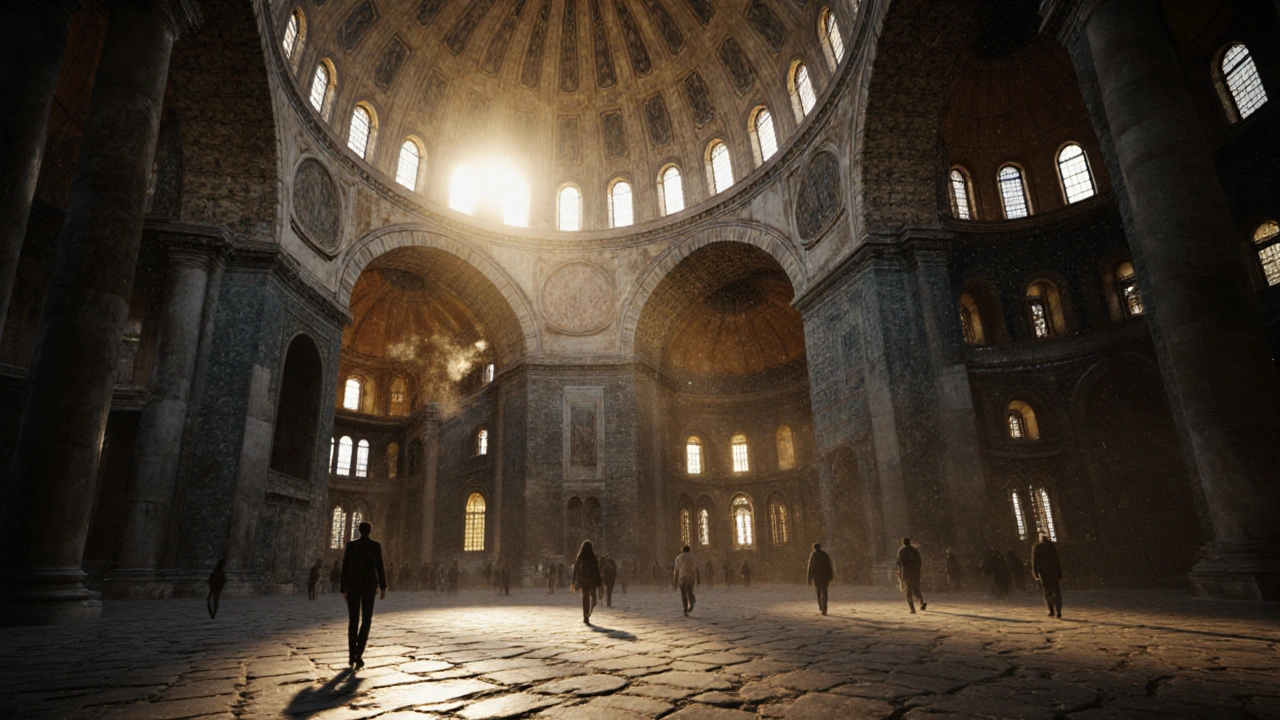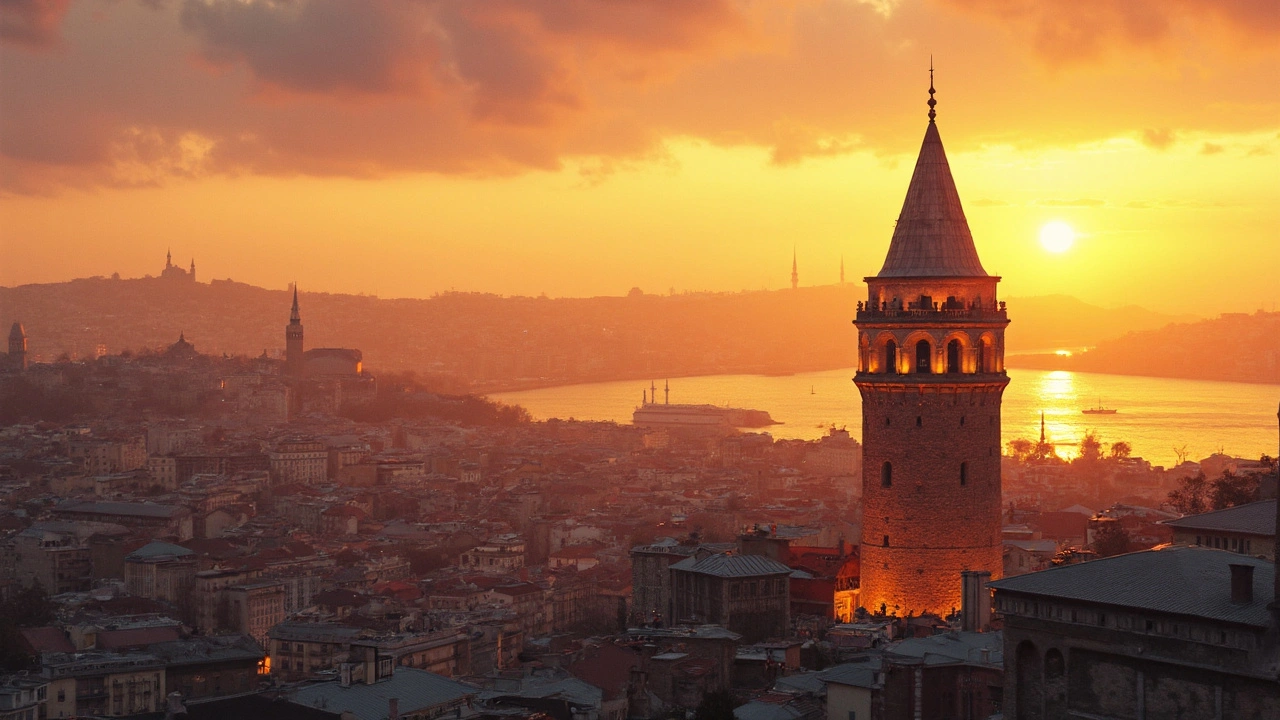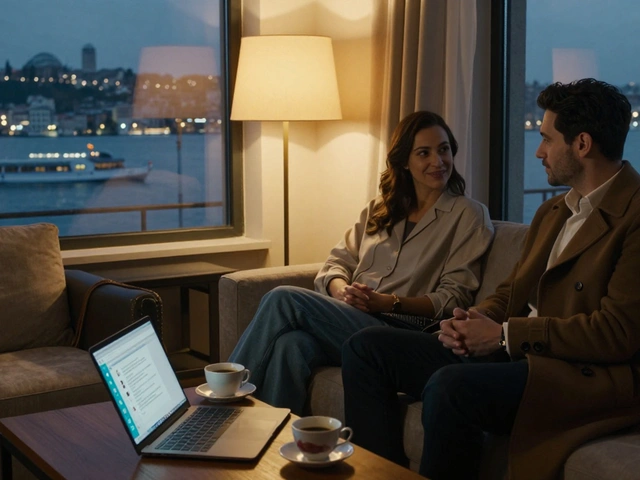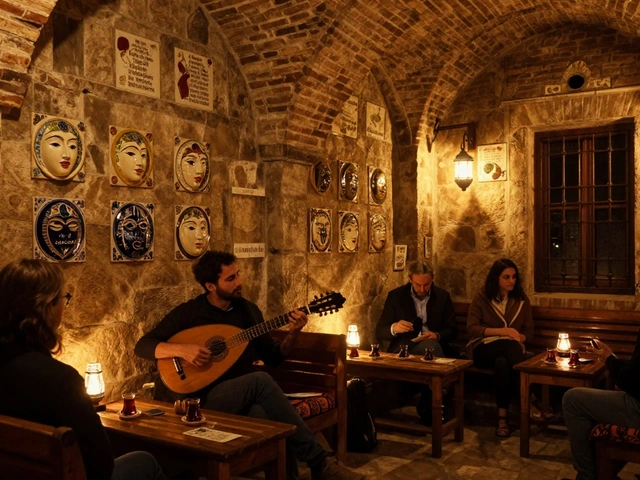Standing over Karaköy and catching the eye from almost anywhere along the Bosphorus, Galata Tower is one of those Istanbul attractions that never really blends in. If you’ve ever tried to get from Taksim to Eminönü during a busy Saturday, you’ve probably passed right by it—maybe even squeezed through groups of tourists fighting for the perfect shot.
If you actually live in Istanbul, you know Galata Tower isn’t just a thing for sightseeing. My son Jaxon can point it out from the ferry coming across from Kadıköy, and every friend visiting from abroad wants to meet at the base for çay. There’s a reason locals, students, Instagrammers, and even old-timers end up circling back here.
The real trick is visiting like you belong—instead of stumbling around with a giant paper map. Getting in is pretty quick now with online tickets (I use the official MüzeKart when I bring out-of-town friends—saves money if you’re doing more museums). Be ready for crowds, especially on weekends, and block off at least an hour if you actually want to catch the sunset from the top. The view covers all the big Istanbul landmarks, from the Golden Horn to the minarets of Sultanahmet, so keep your camera ready but watch out for pickpockets in the packed stairwells or elevator lines.
- Galata Tower’s Purpose and Story
- Why Istanbul Locals Still Visit
- How to Navigate the Touristy Crowd
- Photo Tips and The Best Time to Go
- Surprises in the Neighborhood
- Modern Life and Old Traditions Around Galata
Galata Tower’s Purpose and Story
If you’ve walked around Beyoğlu for even a day, you know the Galata Tower is more than just a postcard photo. The original tower was built way back in 1348 by the Genoese who lived in Galata, which was basically a colony full of European traders right across from the old city walls. They called it the Tower of Christ, and it was the tallest thing around for centuries. You can spot it on skyline sketches from the Ottoman era, taking up more space than even Hagia Sophia in some drawings.
Back then, the tower’s main job wasn’t really sightseeing: It worked as a watchtower to keep an eye out for naval threats in the Bosphorus, and over time it doubled as a fire lookout. Istanbul’s old wooden houses meant fires could spread quickly, so spotting smoke early was serious business. A few hundred years later, the Ottomans loved using the tower for this—it wasn’t just for show.
One of the wildest stories is about Hezarfen Ahmet Çelebi, who supposedly strapped on wings and jumped off the top in the 1600s, landing on the other side of the Bosphorus. Some folks treat it like a legend, but you’ll find his name all over science and kids’ books here in Turkey.
Here’s a quick snapshot of key milestones for Galata Tower:
| Year | Event |
|---|---|
| 1348 | Built by Genoese as "Christea Turris" (Tower of Christ) |
| 1453 | Ottoman takeover—used for military observation |
| 16th-18th c. | Watchtower for fires, city signal station |
| 1967 | Major restoration, opens to public |
Today, Galata Tower is officially a museum run by the Ministry of Culture and Tourism. The inside gallery tells this full story with historical photos and little models. Even the restoration photographs up there show locals rebuilding stone by stone after the old wood burned. It’s survived earthquakes, sieges, even a few wild parties when it was a nightclub for a few decades. If you want to get the most out of your visit, check out the timeline on the ground floor and ask staff about the old fireman’s lookout section—that’s where the legend really comes to life for Istanbulites.
Why Istanbul Locals Still Visit
Despite being plastered across every tourist guide, locals have their own reasons for heading back to Galata Tower. It’s not just another historic spot – it’s part of the city’s daily life. Couples will come here for first dates just to see the city lights, students meet up for tea under the shadow of the tower, and families bring their kids to tell stories about Hezarfen Ahmet Çelebi supposedly flying from its roof to Üsküdar back in 1632. That story’s a favorite with schoolkids and even shows up in textbooks.
Many people use the area around the tower as a spot to start or end a walk up Istiklal Caddesi. You’ll spot people lined up for simit at “Galata Simitçisi” or hanging out in cafes like Velvet, which is right around the corner if you want a quiet çay or Turkish coffee.
Locals also know the district is full of little shops and tucked-away art galleries. There’s a small but loyal following for music gigs at Nardis Jazz Club, which is basically under the tower. For Ramadan, the neighborhood lights up – you’ll see decorations and hear traditional drummers early in the morning before sahur. The tower even hosts some official events and museum nights for Istanbul’s culture crowd.
- If you want a crowd-free visit, go early on weekday mornings before tour buses roll in.
- Friends meeting up after work use WhatsApp to check the lines instead of relying on luck.
- Special events, like New Year’s Eve, bring locals for fireworks and late-night snacks from the street vendors.
People in Istanbul often talk about Galata Tower like it’s part of their personal history. It marks anniversaries, first solo excursions into Beyoğlu, and Eid photos with family. When there were restoration works in 2020, older residents shared memories from back when only the bravest climbed the whole way up before the elevator was installed.
| Year | Visitors (Approx.) |
|---|---|
| 2018 | Over 500,000 |
| 2022 | About 1.2 million |
| 2024 | 1.5 million+ |
So, even with the crowds, Galata Tower is still in regular rotation for Istanbul natives. It just means a little more to them than a nice photo for Instagram.
How to Navigate the Touristy Crowd
If you've tried visiting Galata Tower after noon in July, you already know: crowds are no joke here, especially when cruise ships are in town or on weekends. Even locals from Beyoğlu will avoid the area on busy afternoons unless they have a game plan. Here’s how you can actually enjoy the view without losing your mind:
- Go early or late: The ticket window opens at 8:30 am, and that’s really your best shot at a chill experience. If you can't make it in the morning, try after 8 pm in summer—right before they stop letting people in at 10 pm. You’ll get cooler weather and sunset lighting without waiting in endless lines.
- Buy your ticket ahead: Skip the physical line. Use the official MüzeKart if you live in Turkey or are visiting more than once. Otherwise, buy your ticket online from the museum site or the Ministry of Culture’s app. This saves so much time.
- Plan for stairs: The elevator only goes to the 7th floor. The last two floors are stairs—about 60 steps up a narrow spiral. Keep this in mind if you're with kids or grandparents.
- Keep your stuff close: Pickpocketing isn’t as crazy as it used to be, but it happens, especially around crowded tourist hotspots. Don’t leave your bag unzipped, and keep phones in sight if you’re snapping pics.
For families, weekdays during school hours (10 am – 2 pm) are your sweet spot. If you’re planning to take photos from the balcony, weekday mornings are much less crowded and you’ll have more time to actually see the view instead of fighting for space.
| Day | Typical Wait (minutes) | Best Hour to Visit |
|---|---|---|
| Monday-Friday | 10-30 | 8:30-10:30 am |
| Saturday | 30-60+ | 8:30-9:30 am |
| Sunday | 45-80 | 8:30-9:30 am |
And one last thing: the Galata Square fills up quick with school tours after 11 am. If you want that classic photo with the Galata Tower in the background, get there early—or try a late-night visit when most of the crowd has moved on to the cafes.
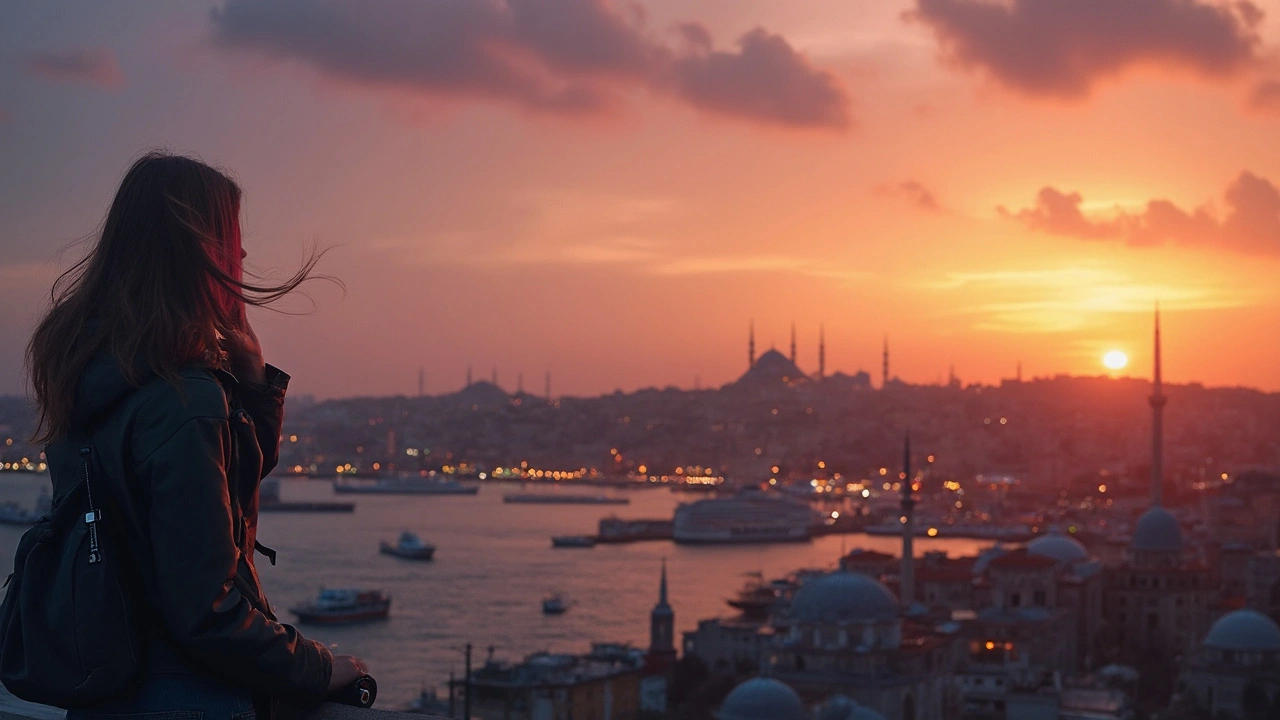
Photo Tips and The Best Time to Go
If you’re after that legendary Istanbul skyline shot, timing and a bit of street smarts make a huge difference. The line for Galata Tower can get wild from midday—seriously, there’s almost always a crowd in summer, especially on weekends, and trust me, you don’t want half your photo to be elbows.
Your best bet? Show up right when the tower opens at 8:30 a.m. You’ll find softer light, less haze, and it’s a whole lot easier to grab your spot along the railing. Sunset is the classic pick, but prepare for an Instagram influencer convention: the place gets packed just before dusk, so line up at least a half-hour early for a front-row view. If it’s winter, the golden hour is much shorter; plan for earlier in the day since the sun can dip quickly behind the city’s hills.
Camera phone, DSLR, or an old-school point-and-shoot—they all work, but try to bring a wide-angle lens if you want to capture the Bosphorus, Galata Bridge, and the domes of Sultanahmet in one frame. Some pros climb a few steps down from the top to avoid glass reflections from the main viewing area. And if you really want a local trick, take a few snaps from nearby Şair Ziya Paşa Yokuşu street—less crowded, and you still get the tower in your background with the energy of Beyoğlu below.
- Go for morning shootouts on weekdays to skip big crowds.
- Watch out for overcast days—fog can ruin the full-city view but gives moody, unique shots.
- Tripods are not allowed at the top, but small handheld gimbals are usually fine.
- Night shots work too (tower closes at 11 p.m.), and Istanbul’s city lights are wild from up there.
- Check the weather ahead, especially during spring storms or fall fog, since visibility changes fast.
To help you plan, here’s a quick reference of opening times, sunset times, and crowd levels by month based on recent city stats:
| Month | Opening Hour | Average Sunset | Typical Crowds |
|---|---|---|---|
| June | 08:30 | 20:40 | Very busy after 17:00 |
| September | 08:30 | 19:20 | Moderate, peak at sunset |
| December | 08:30 | 16:45 | Quiet except weekends |
| March | 08:30 | 18:05 | Light except spring break |
So, if your goal is to skip chaos and nail that perfect shot, aim for weekday mornings—bonus if it’s outside peak tourist months. And don’t forget: a simit in one hand never hurts the photo game either.
Surprises in the Neighborhood
The area around Galata Tower is way more than a quick photo op. Take a few steps down the hill and you’ll run into tucked-away bakeries, third-wave coffee shops like "Petra" and "Coffee Sapiens," plus old-school taverns that have somehow survived the city’s constant change. Locals usually skip the big tourist breakfast spots and head for "Privato Cafe," famous for homemade jams and a view back up at the tower itself.
If you’re into music, stop by "Lale Plak," the record shop that's pretty much an institution for anyone who collects vinyl in Istanbul. Nearby, the Mevlevi Museum shows a slice of history with its dervish lodge and daily Sufi music performances.
Street art has become a real scene here too. Walk along Serdar-ı Ekrem street and look for murals hiding on garage doors or side alleys. The whole neighborhood feels like an open-air gallery these days.
Need a break from the crowd? The old Galata Greek School often hosts temporary art shows and indie theater. Entrance is sometimes free, depending on the exhibit.
Shopping isn’t just for tourists either. There’s "Atölye 11" for handmade ceramics, "Atelier 55" for edgy local fashion, and pop-up vintage markets outside on weekends. If you want something beyond the usual souvenir magnets, these places are gold.
"Galata attracts young creatives because it’s always reinventing itself, but the sense of neighborhood sticks," said Murat Güzel, co-owner of a local design studio, in an interview with Radikal.
Don’t forget that the Galata Tower area is also a top spot for local events—especially during Istanbul Jazz Festival when street corners fill up with live music and impromptu performances. Just keep an eye on announcements from Beyoğlu Belediyesi or drop by random venues for surprise gigs.
Modern Life and Old Traditions Around Galata
Galata isn’t just about the tower; it’s the heart of both old Istanbul and its buzzing new side. Walk down the cobbled side streets behind the Galata Tower and you’ll catch shop owners shouting greetings, guys fixing shoes at tiny stalls, and Gençler grabbing coffee at Gönül Kahvesi. Traditional bakeries still bake simit right on site—if you’re hungry, get one fresh from Galata Simitçisi (nobody likes the reheated ones further up the hill).
The Jewish Quarter, stretching toward Şişhane, has been here for centuries, and you’ll spot Star of David tiles on old apartment buildings if you look up. The area is known for housing synagogues like Neve Shalom—still active and sometimes open to respectful visitors. Right next door, cool new spots like Nardis Jazz Club fill up with locals for live music every weekend. Galata’s tiny music stores sell guitars, saz, and vinyl records, where it’s not uncommon to hear Turkish rock blasting during the day.
Ramadan brings street iftar events where locals share food with passersby, and shopkeepers offer sweet lokum samples. On the flip side, the area around Serdar-ı Ekrem Street has dozens of boutiques for Turkish designers like Simay Bülbül or the slightly chaotic but lovable vintage shops. Grab a quick kahvaltı (Turkish breakfast) at Velvet Cafe; the owner will teach you the difference between Erzincan tulum and classic beyaz peynir if you ask.
Don’t skip checking out the old Galata Mevlevihanesi, Istanbul’s first whirling dervish lodge just a few minutes’ walk away. They run sema ceremonies open to the public once a week—not just for tourists. If you’re with kids, there’s a surprising amount of street art, and Lego-themed murals that Jaxon still begs to spot on every visit.
Galata mixes history and right-now like nowhere else in Istanbul. Want to feel local? Treat yourself to a Turkish coffee at the closest ancient café and follow it up with street-style sneakers from a shop down the same street. Old and new, cheek by jowl—it’s the Galata way.
